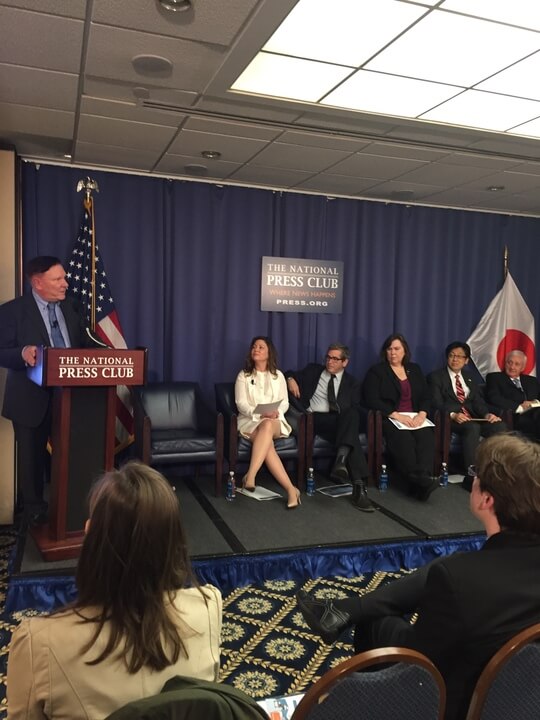WASHINGTON — Five years ago a nuclear accident in Japan devastated the country and served as a learning experience for the nuclear industry in other lands. The United States has taken major steps to increase safety at all of its nuclear power plants, experts said Wednesday.
The March 11, 2011 earthquake and tsunami that struck Japan causing a nuclear meltdown at the Fukushima Daiichi power plant was a disaster that ranks second only to Chernobyl in terms of the amount of radioactive material released.
In the U.S., safety procedures have been upgraded with $4 billion already invested, according to Maria Korsnick, chief operating officer of the Nuclear Energy Institute, a research organization.
Improvements include the FLEX strategy – using portable and multi-functional back-up equipment – which will be in place at all nuclear plants by the end of the year. In addition, two national response centers have been created to deliver back-up equipment to any plant within 24 hours of a serious accident.
In addition to performing plant inspections, the Nuclear Regulatory Commission also requires the use of new technology to check levels of cooling water and temperatures. The commission is an independent agency that regulates commercial nuclear power plants and the use of nuclear materials.
“Safety has always been and will continue to be our industry’s foremost priority,” Korsnick said.
The Fukushima meltdown, coming up on a five-year anniversary March 11, was a severe accident but a “rare” event, said Rosa Yang, vice president of innovation at the Electric Power Research Institute.
“What happened at Fukushima was beyond what we designed the reactor for,” said Yang, who is a member of two international advisory groups created to help Japan recover. “If you lose water, you fill more water and you have emergency diesel generators, which helps put the water in. Fukushima had a station black-out which means there’s no power coming in or out, so the diesel generator couldn’t start. There was no electricity whatsoever.”
The accident was the first meltdown to be caused by a major natural disaster, said Dale Klein, chairman of the Tokyo Electric Power Company’s nuclear reform monitoring committee.
“This was the first accident that we’ve seen in the nuclear business that was initiated by a very strong external event and all the safety systems that we thought would be in place failed,” said Klein, who is also the former chairman of the U.S. Nuclear Regulatory Commission.
Out of the 54 nuclear power plants in Japan – all shuttered after Fukushima — only two have been cleared by the government to restart.
Japan has made upgrades ranging from sturdier facility structure to more efficient responses to emergencies, said Takafumi Anegawa, chief nuclear officer with the Tokyo Electric Power Company, which owns the Fukushima plant.
These improvements are necessary as geologists say an area 125 miles south of Tokyo could be vulnerable to another tsunami within the next 30 years, according to a report published by the Electric Power Research Institute
“We didn’t have enough engineering abilities to create good nuclear safety,” Anegawa said. “Our management of an emergency condition was very poor.”
Some plans call for building sea walls around power plants and conducting training drills so plant operators can learn how to respond efficiently, but Anegawa said the most important task is to decommission the Fukushima Daiichi power plant and rehabilitate the Fukushima prefecture.


